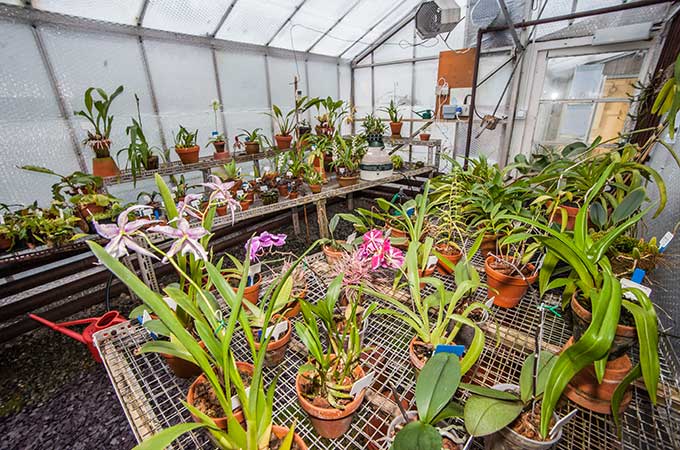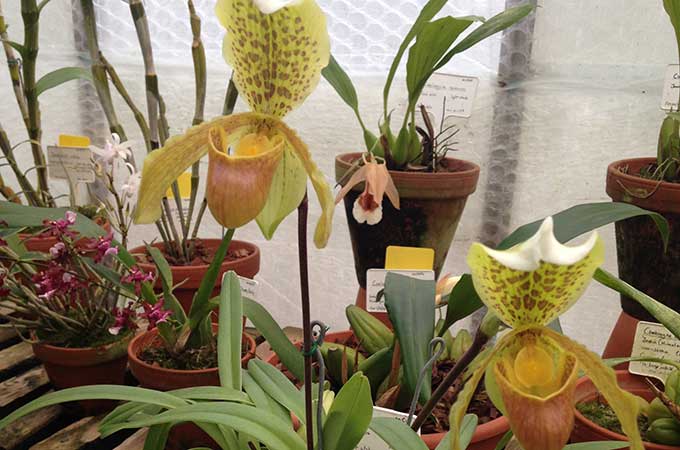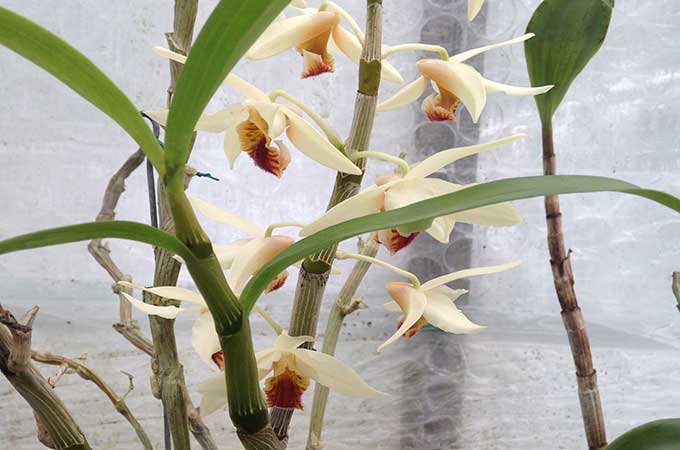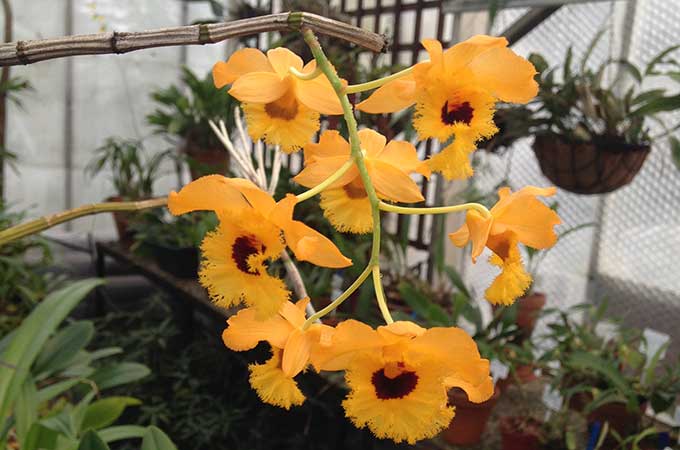Orchid House
The living orchid collection at the University Botanic Garden, Treborth, has been expanded, and dedicated to the memory of Professor Peter Greig-Smith (1922 to 2003). “Prof” was a member of staff in the School from 1952 to 1982 and specialised in plant ecology, a subject in which he was a world-renowned authority. He was also an expert on monocots with a particular personal interest in the Orchidaceae.
The collection is increasingly valued by the students, the Friends of Treborth, and the general public. It provides a year-round inspirational source of teaching material for the University, and many extra mural organisations such as art classes. (It is perhaps where science and the arts combine well!) For the scientists, botanists and zoologists alike are attracted to find out more about what is the largest family of flowering plants, as most species have complex and intriguing relationships with their pollinators. The importance of their role for maintaining biodiversity in many ecosystems is quite evident.
Orchids are often the launch pad for young people inspiring them to find out more about the environments from which they come. All of the tropical species are from environmentally sensitive areas, such that many are now known to exist only in cultivation! Economically, orchid species and hybrids are a global multi-billion dollar industry, for pleasure, food and medicine.
Criteria for Collection Composition
- Broad spectrum of representative species from all the Tribes, Subtribes, etc. illustrating the huge variety of morphology and habitat. This provides an endless source of material for teaching systematics, anatomy, biodiversity, conservation and ecology.
- Species of both botanical interest and spectacular display.
- Flowers for fragrance - regarded as very important due to this being the plant family with the widest range of fragrances and scents. The type of scent, and the time of day release are useful indicators for type of insect pollinator.
- Representative species from all over the world showing geographical diversity. Himalayas through Indo-China and Taiwan, Japan, Australia, Madagascar, Indonesia, Central South and North America, Europe and the British Isles, mainland Africa.
- Species and hybrids of historical interest, such as Darwin’s Madagascan orchid, Angraecum sesquipedale.
- Hybrids, such as Cymbidium and Phalaenopsis, are used for display and teaching. The large, long lasting flowers are ideal for floral anatomy classes, and demonstrations of the unique pollination mechanism.


.jpg)



